It’s a story that none of us learned in history classes, and it unfolds as a taut, complex conspiracy thriller — one that raises all new questions.
Set in 1865, Manhunt focuses on the aftermath of one of America’s most tragic events: the assassination of Abraham Lincoln. With all of the biopics, TV shows, and documentaries about the Civil War and Lincoln’s life, I was skeptical about investing time in another one. But Manhunt surprised me as it pulled me in. From the first episode, it becomes clear that this is not just the story of Lincoln’s murder or even the search for his killer. It’s an unraveling of the intricate web of people who were affected by – and complicit in – one of the most shocking and impactful murders in history.
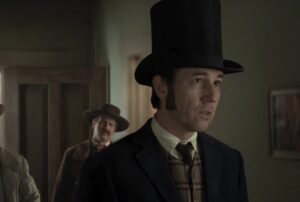
Based on the New York Times bestseller Manhunt: The 12-Day Chase for Lincoln’s Killer, written by presidential historian James A. Swanson, the seven-episode drama centers around Lincoln’s Secretary of War, Edwin Stanton (Tobias Menzies), his close confidante who ostensibly steps into the role of president immediately after his death – before Andrew Jackson eventually takes over. Stanton makes it his mission to track down John Wilkes Booth (Anthony Boyle). But there are Confederate soldiers willing to give him refuge, and we see what it’s like to be one of the slaves who has to share a roof with the killer of the man who abolished slavery.
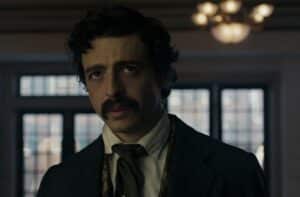
I was shocked by the extent of John Wilkes Booth’s popularity as an actor and his drive for fame. While I had some prior knowledge of his story, it was mostly about his loyalty to the Confederacy. In Manhunt, we see him as a man with deep insecurities and mental health struggles. It piqued my curiosity to read more about him.
At a screening for the series at the Library of Congress in D.C., not far from the Lincoln Memorial, series creator Monica Beletsky talked about the responsibility she felt to get the narrative right. “Anytime you put someone on screen, it’s glamorizing to some extent. And we didn’t want to glamorize him.” Instead, the focus was on “trying to calibrate him so that it wasn’t like a show where you’re trying to get inside a serial killer.”
As she puts it, “We understand him, but we’re not really with him.”
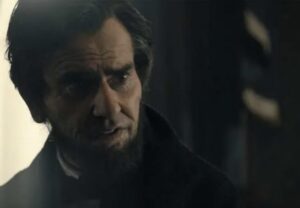
In fact, the story casts a much wider net to build out the broader context of this moment in history. Patton Oswalt, who plays former Union spy turned detective Lafayette Baker, explained that his character was motivated by the bounty on Booth’s head. “One thing that Monica does in the overall arc is that Stanton had to corral a lot of people who were at cross purposes to capture Booth.”
The series also flashes back to when Lincoln (played by Hamish Linklater) was still alive, and we see an impassioned president arguing with Stanton about the aftermath of the war. The author of the book, Swanson, was on set for this. “My view as a writer was not to interfere with the performers, but then the actors and director asked me for my input.” He shared what his research revealed, which is that Lincoln wasn’t “intellectual” about the ending of the war; he was passionate about it. “Lincoln wanted to have mercy and kindness, and said that if we punished [the Confederacy], the war would last for another century.”
Watching Tobias Menzies and Hamish Linklater perform the scenes from his book, he was most impacted by their ability to escalate the emotional stakes. “They did it in a cerebral, electrical, and calm way. [Then] they took it up a notch each time. There must have been 20 takes, and it got more intense.”
Manhunt‘s Hidden Figures
The biggest departure from other stories about Lincoln is the role of the slaves and Black soldiers who found themselves entangled in the hunt for Booth, some through their complex relationships with their owners — Confederate sympathizers who helped aid Booth’s escape.
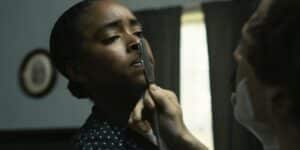
Chief among them is Mary Sims, a slave to Dr. Samuel Mudd (Matt Walsh), who’s forced to provide nursing care to Booth after the physician treated him for a broken leg.
The actress Lovie Simone, who plays Sims, hadn’t heard of her before the series. “I understand that there’s a lot about black life back then that remains undocumented. Monica had informed me that there was more information available on John Wilkes’ horse than on Mary Sims’ life.”
At the screening, Simone explained how she prepared for playing a real person whose life had been largely overlooked by history. “Mary’s life could parallel the lives of a hundred other slaves who lived in similar circumstances, facing oppression and adversity. It involved navigating through vagueness while striving for specificity, and also understanding a bit about her family. It was about using the little information I had to portray a complex character, which is something black people do all the time. So, yeah, it was challenging.”
The Not So Hidden Figure: Bart Simpson
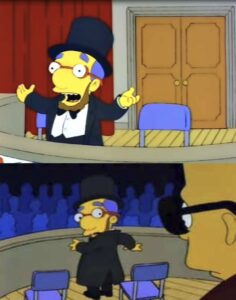
The actor who plays Booth, Anthony Boyle, managed to inject some humor into the heavy subject matter — and ensure that he removed any sheen of glamour from his character. “Well, I mean, growing up in Ireland, my first introduction to Booth was through an episode of The Simpsons,” he shared to laughter from the audience. “There’s an episode where Bart Simpson is playing John Wilkes Booth, and Milhouse is playing Abraham Lincoln, and they’re in Springfield Elementary, and he says, ‘Hasta la vista, Abe.’ So I sort of built the whole character around that.”
To get a look into who Booth was, Boyle read some of his letters from when he was 15 to 26. In his early days, he was “rambunctious,” going so far as to moon people at fairs. But as he got older, something in him changed. “Racism sort of became like a cancer in his brain, a fixation that he just couldn’t let go of. He was writing about it every day, he started to become violent, he started to talk about acts of violence, and you really see this descent into madness through these letters.”
Of course, the biggest shoes to step into were those of Lincoln himself. Hamish Linklater (The Big Short) confided at the screening that he had been “very scared” to jump into the role, and read as much as he could – then threw it all out. The version of Lincoln that he plays is “more of a domestic Lincoln, a husband, a father and friend to Stanton.”
“I believe the intention was to depict the impact of the relationships that drove his pursuit, as well as the ongoing struggle for reconstruction that follows.”
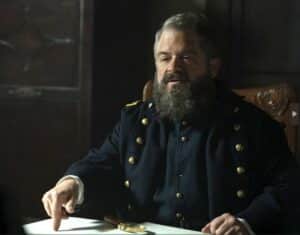
As for Oswalt’s Lafayette Baker, he dove deep into his life story, and shared with us what he thinks his character would be like today. “He had some shadiness to him, and there’s a little hint there about him being conspiratorially minded. They don’t get into it in the show, but he ended his life in just a really bad way, a crazy conspiracy nut. Like, he’s the kind of guy who would have retired from the force and had a show on Newsmax or something like that. That’s the kind of guy he would have ended up being.”
For Stanton to tap a man with questionable motives as his chief detective begs some answers. “I feel like Stanton knew that he could use this guy’s skills, and in a weird way, his thirst for money would make him work his ass off to try to capture Booth. We can use that. So there’s a lot of that going on that we did not learn in school.”
Watch Manhunt now on Apple TV+.


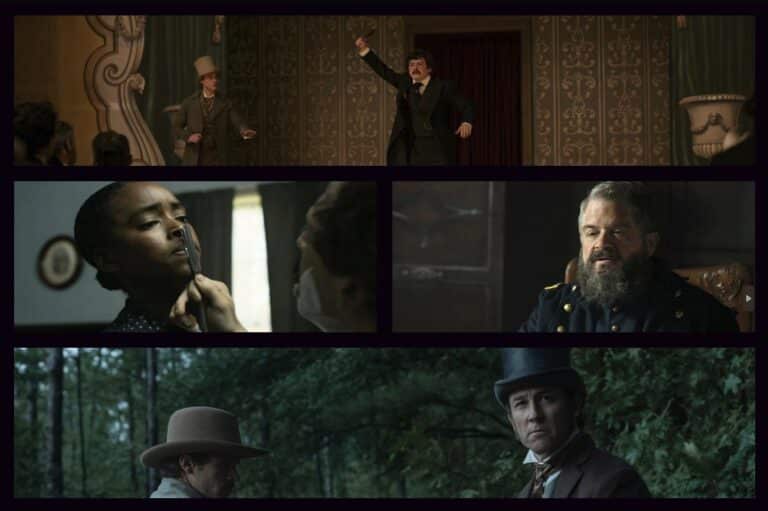
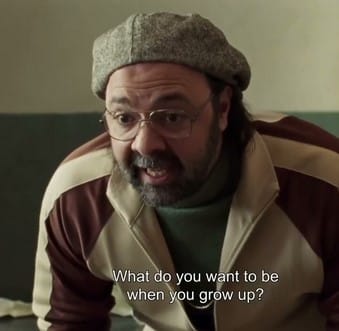

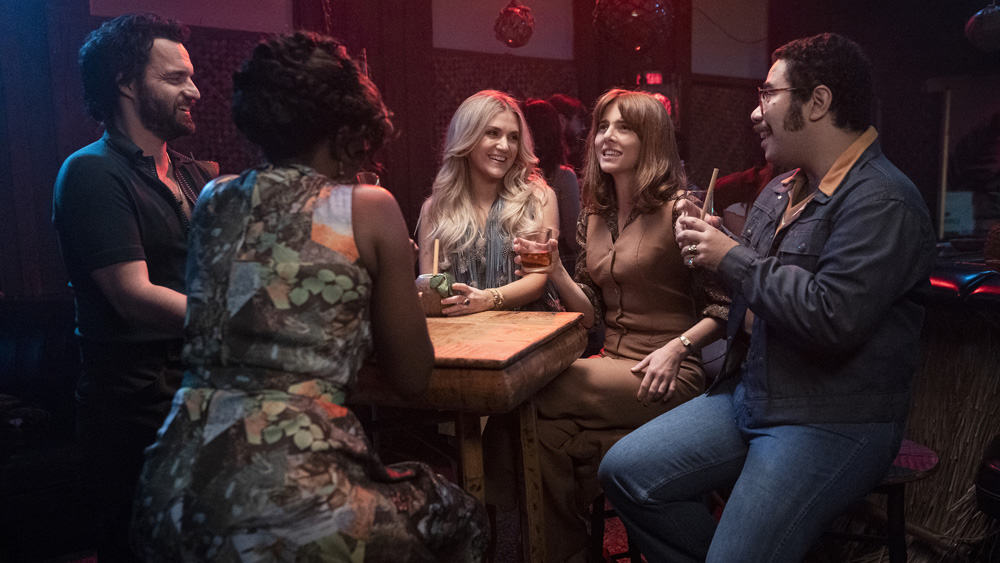
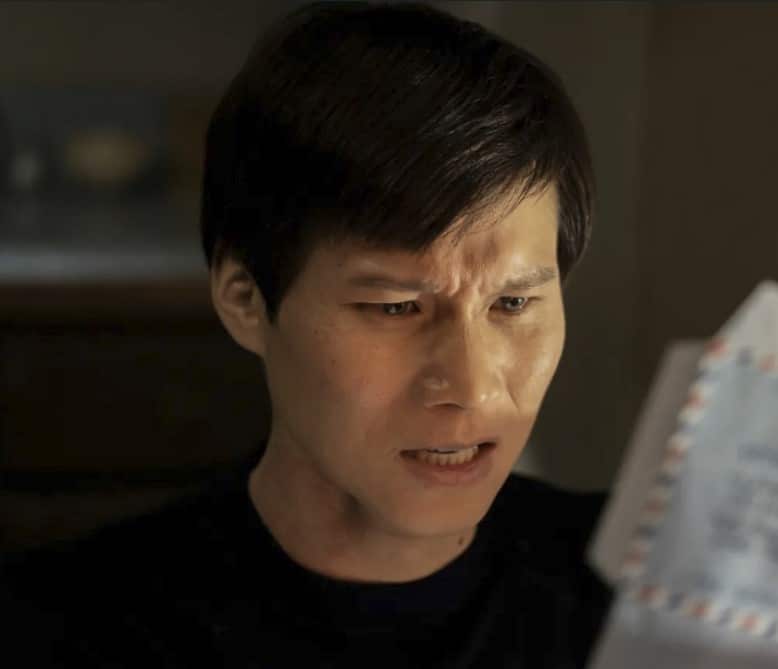


Start a watercooler conversation: